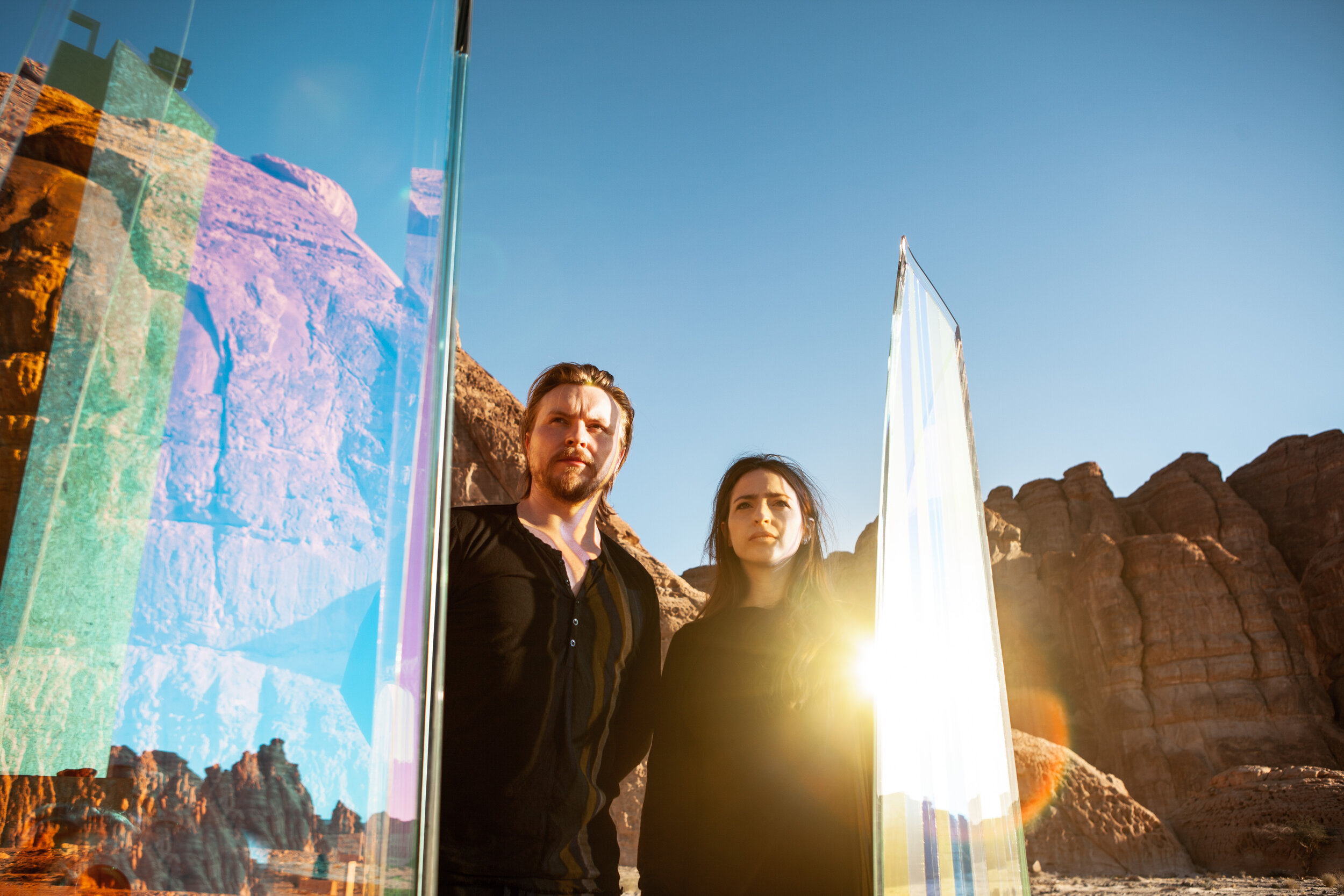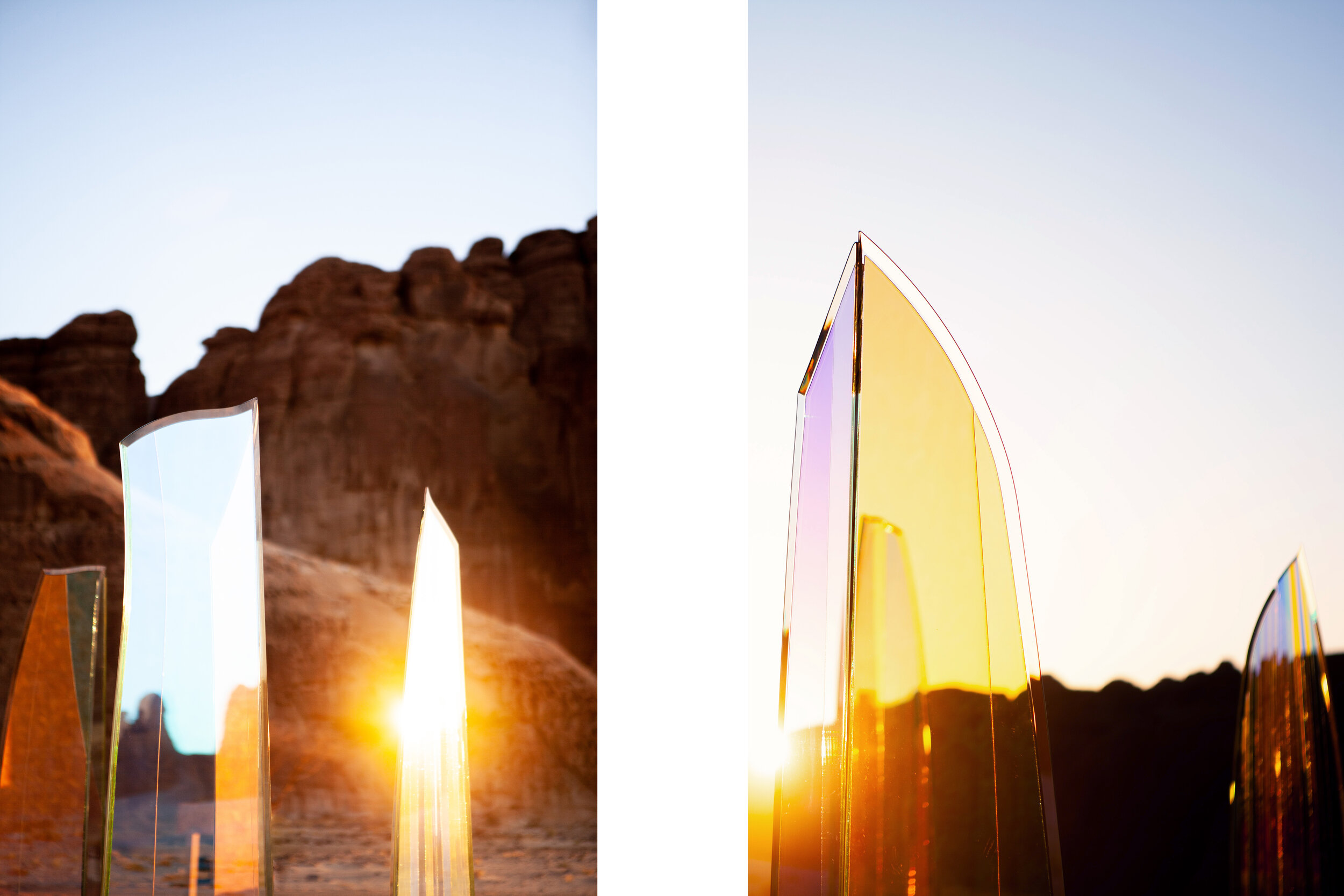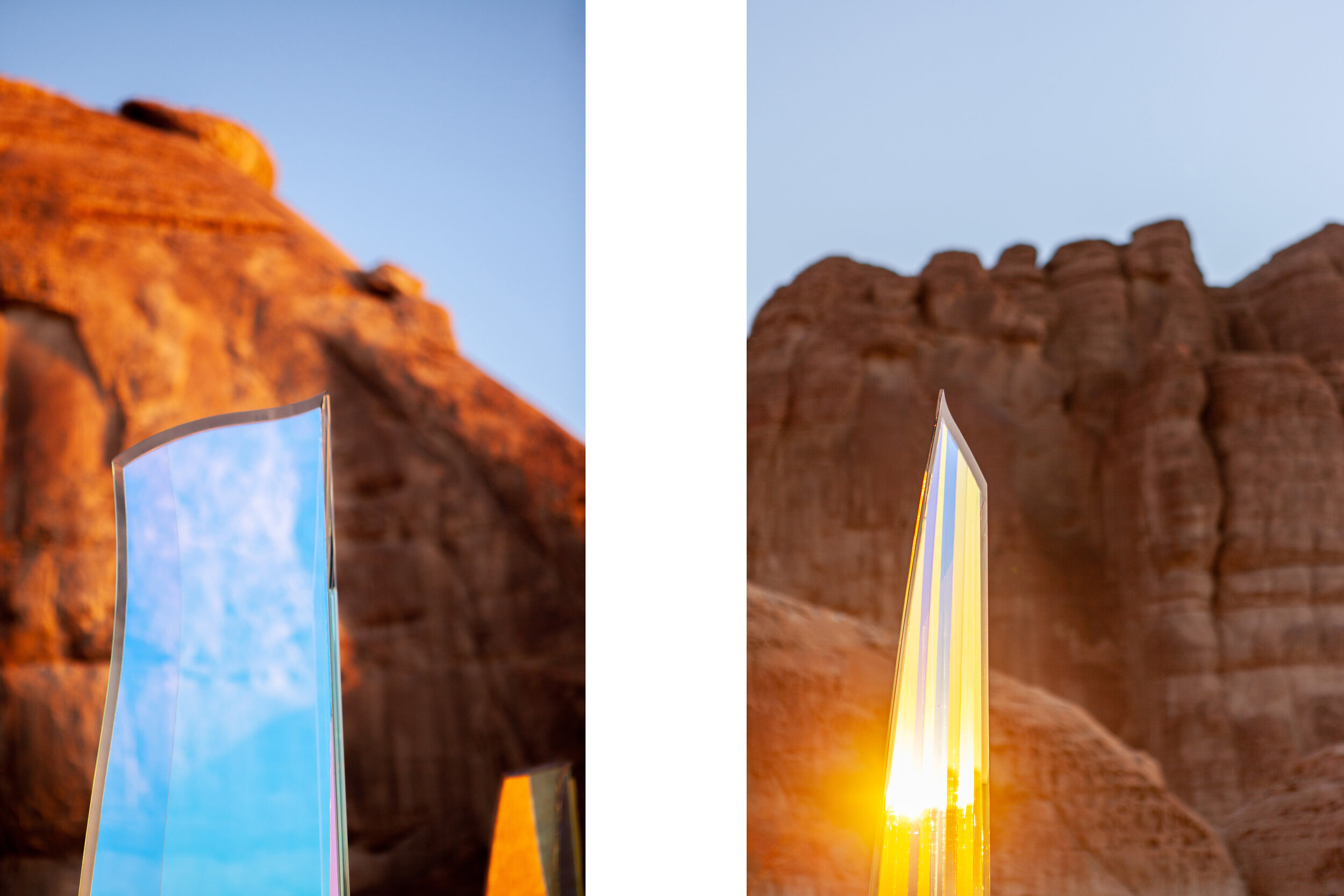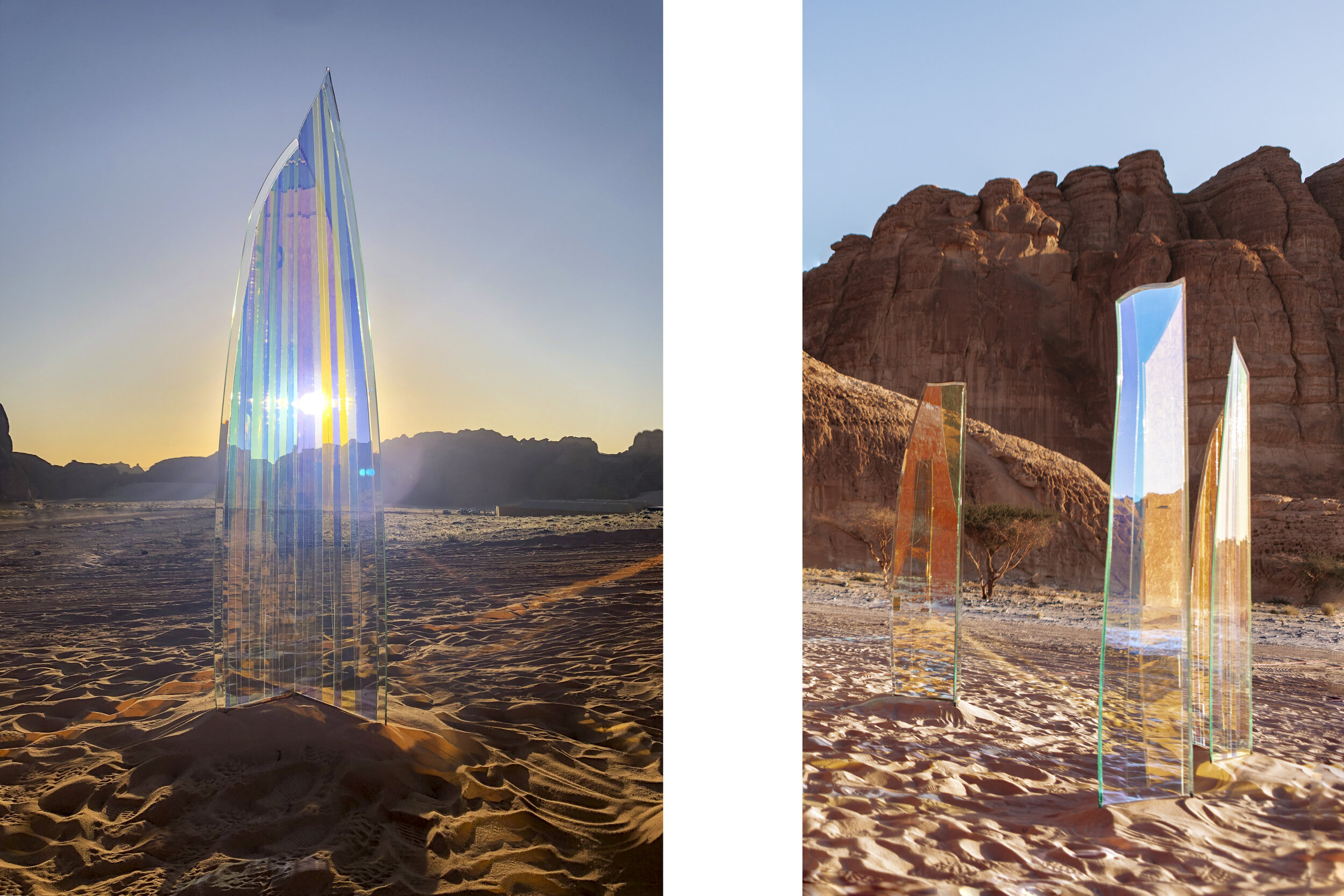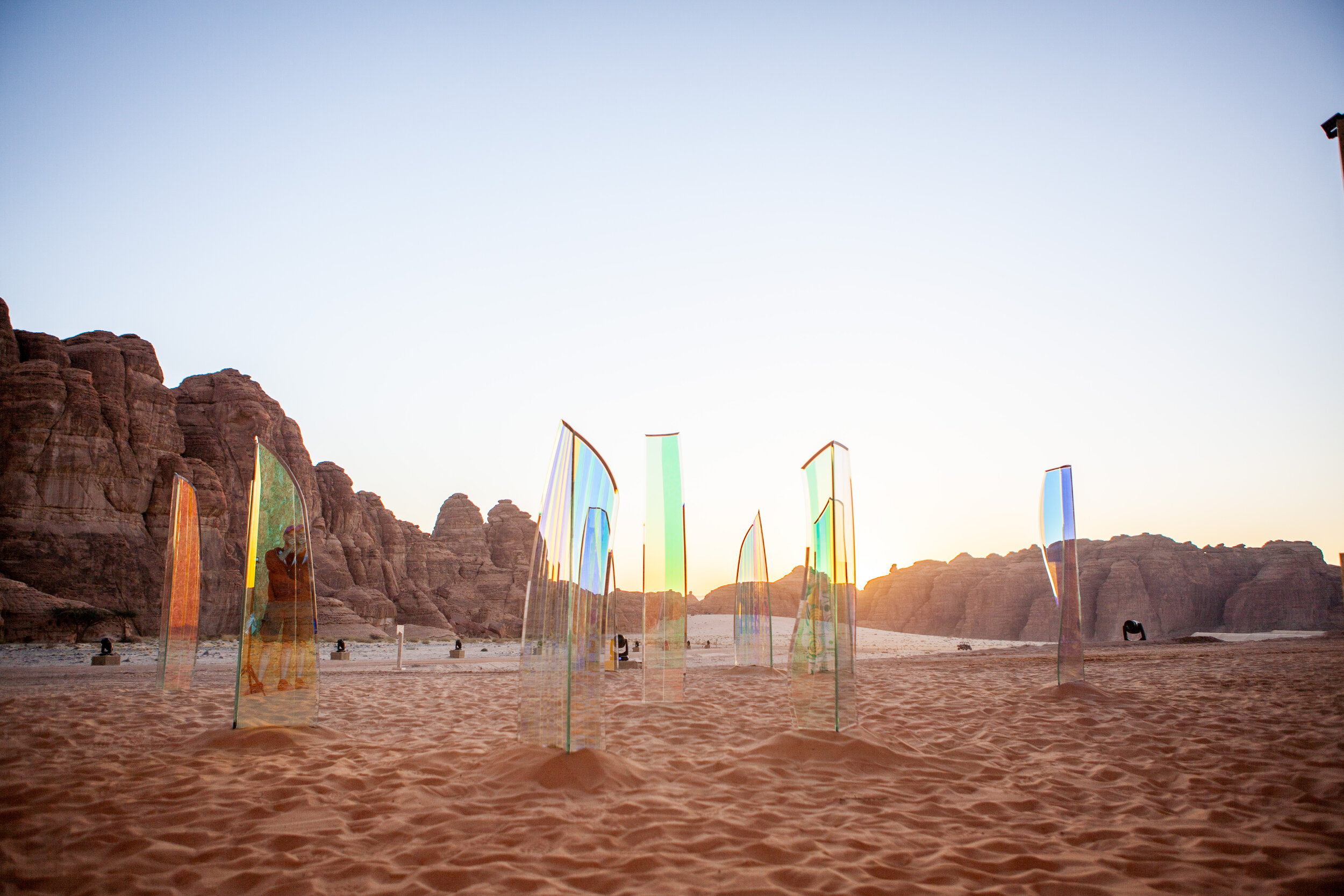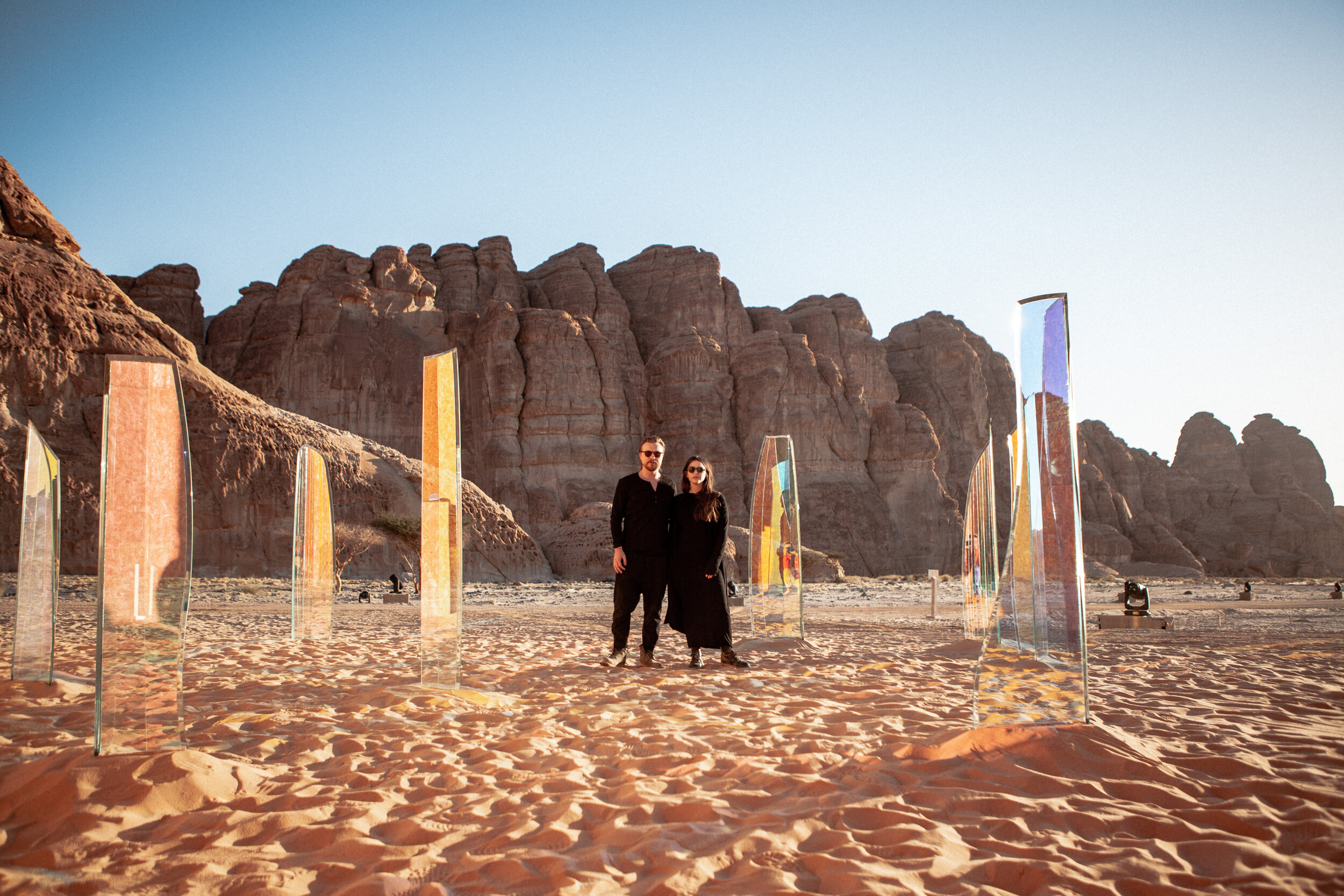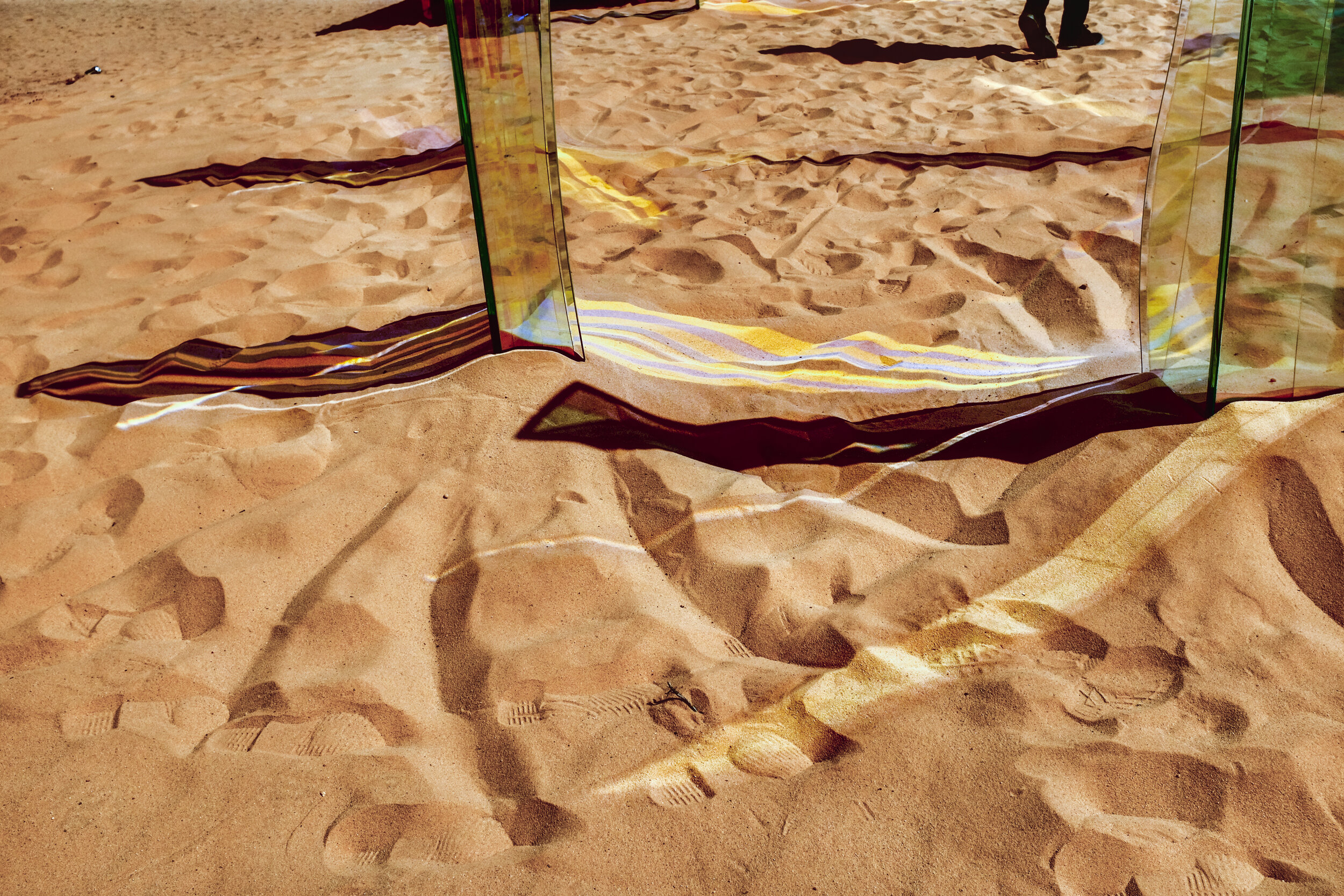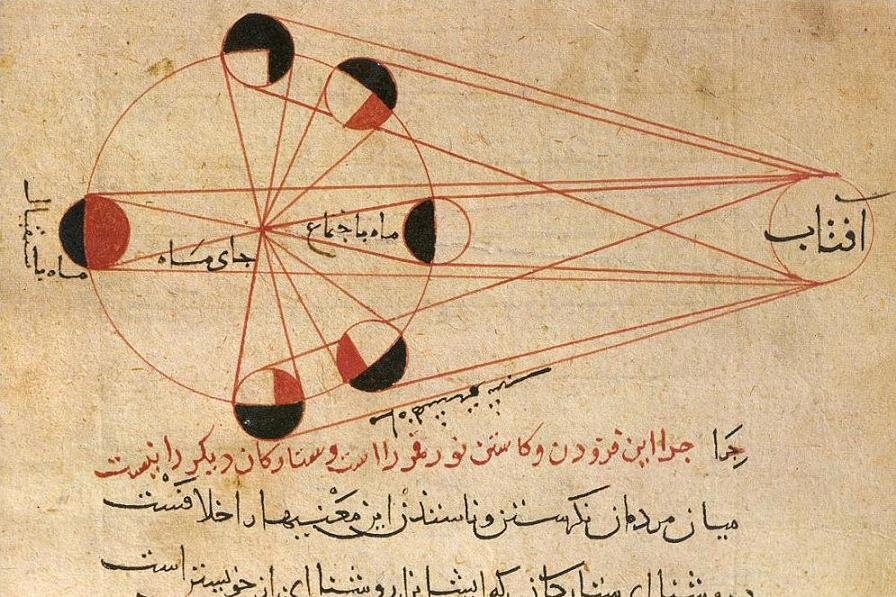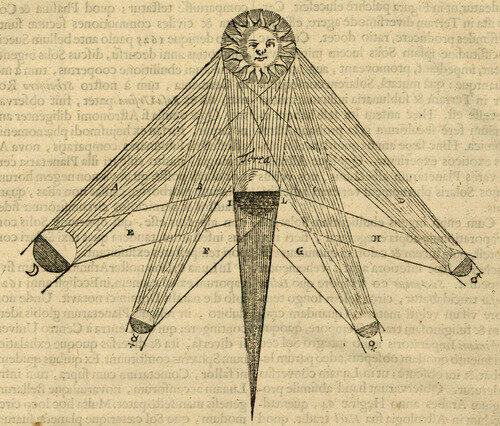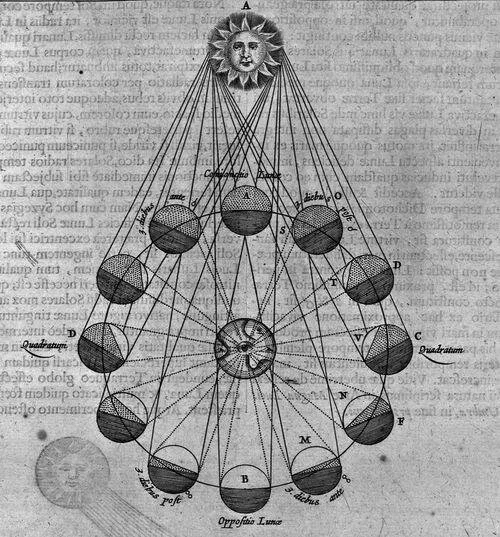Horizon of day and night
Hand-cut laminated optical glass, low-iron glass, steel base. 2020
9 x 150-200cm x 40-50cm x 30-40cm
Prismic glass monoliths point to the horizonal rising and setting of the sun (at present and at winter and summer solstices); the south and north Polaris; and the setting of Venus, the light-bringer that connects the horizons of east and west to the celestial sky. Informed through geometric surveys of megalithic stone circles, these monoliths are pillars of light that create a clockwork of optical projections, orienting our presence in light, space and deep-time.
The orientation of the monoliths are aligned so as to reveal the ‘light of the place’ corresponding to geo-cosmic cycles. The colours are inspired by spectroscopic readings that reveal a 'spectral fingerprint’ - the spectral fingerprint of a place deals with its deep time: the light of its geological and cosmological past, interfaced by the elemental and cosmo-technical media that shape the now: Now-ness is an inter-activity.
The event experienced and the visualisations (the coloured photisms) are synchronic and mutually verify each other, because they take part at the same time as the opening of the organs of light (the suprasensory senses) of the subtle physiology - Corbin
In deep antiquity rhythms of the passage of light were marked by megalithic monuments or “pillars of light” across the globe that were intended to inscribe the experience of time. through codification of the human relation to seasonal temporality, the cardinal, horizonal directions of East and West and the vertical sky of celestial lights. Referencing these perennial cosmographies, the artwork replaces the prototypical calendrical technologies of stone with optical glass. The glass monoliths are oriented as axial points towards the rising and setting of stellar lights on the horizon's circle and their relational azimuth. Of these lights the sun is chief, being the symbol of consciousness, governing the temporalities of astronomical and seasonal cycles and illuminating experience. The universal symbol of the sun is also a double symbol: the model of light is that of the diametrical relation; both seasonal passage to opposite and the shadow of eclipse. Light is always doubled. Vision is both the vision of the inner eye of the mind and of the eyes of perception. The sun’s illumination is blinding to the direct gaze. We can’t look directly at the sun just as we can’t look directly towards the subject of our gaze; the seat of consciousness is a blind spot. The sun is always-already mediated in our experience. It is the producer of difference and differentiation, just as light is diffracted and refracted by media into spectral rays of colour. Working through mediation, light creates openings for spectralisation.
The artwork asks us to open ourselves to this passage of difference; to the opening of solar light in its spectrality. The ‘twilight language’ of optical patternation, which changes due to the individual’s orientation to the artwork, the sun, and to the flux of temporality, celebrates the opening of individual consciousness in relation to a cosmic time; a transformation of axial cycles through the multiplication of temporal experiences. In so doing the artwork provides an orientation in which the geographical and anthropological realities of contemporaneity are translated through the visionary dimension of a mandala in which the cardinal, horizontal directions are orientated to the vertical dimension of supra-sensory light. In a time of crisis exacerbated by mono-technological culture, we need to multiply cosmotechnics in support of a corresponding diversification of forms of coexistence: ‘what we really need is a concrete solidarity that allows differences and divergences before the falling of dusk’ - Yuk Hui.
The work seeks to present the site of a crossroads between traditions; a dialogue at the astral crux. The title ‘Horizon of Day and Night’ references both the experience of ‘clear light’ in the Tibetan tradition and the symbolism of the ‘man of light’ in the Sufi tradition (who attains transcendent apperception through an orientation to the ‘threshold of the beyond’, that is a horizon of light encompassing East and West). The meditative gazing that the work seeks to induce is a gaze through psycho-geographical differentiation onto the supra-sensory clear light that is reflected within the body of the individual. Following the tradition of sky-gazing in the meditative traditions, the gaze is transmuted into a form of vision that is reconnected to a cosmic temporality, in which the natural sun is realised as being also an interior element of the subtle, psycho-physical body—an interior body of light that is common to each of these traditions: ‘What then is the imagination if not the sun in man’ - Paracelsus.


